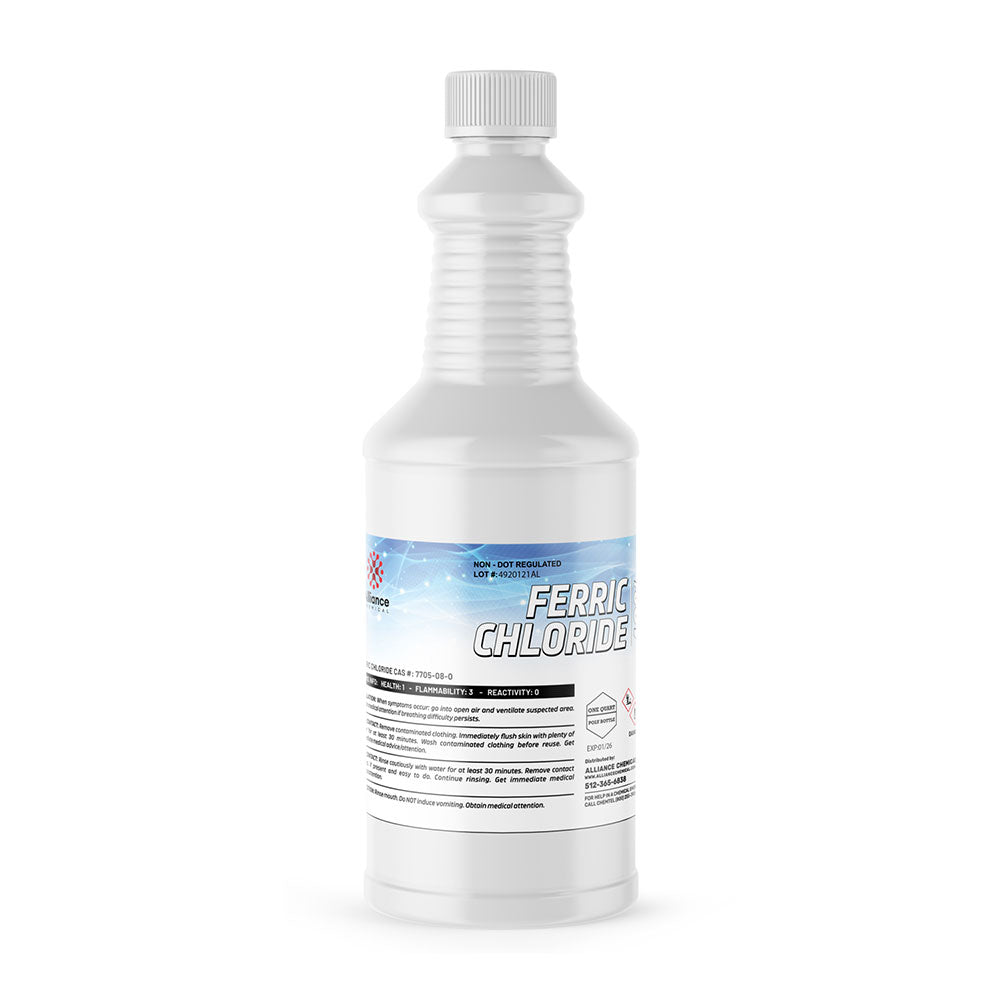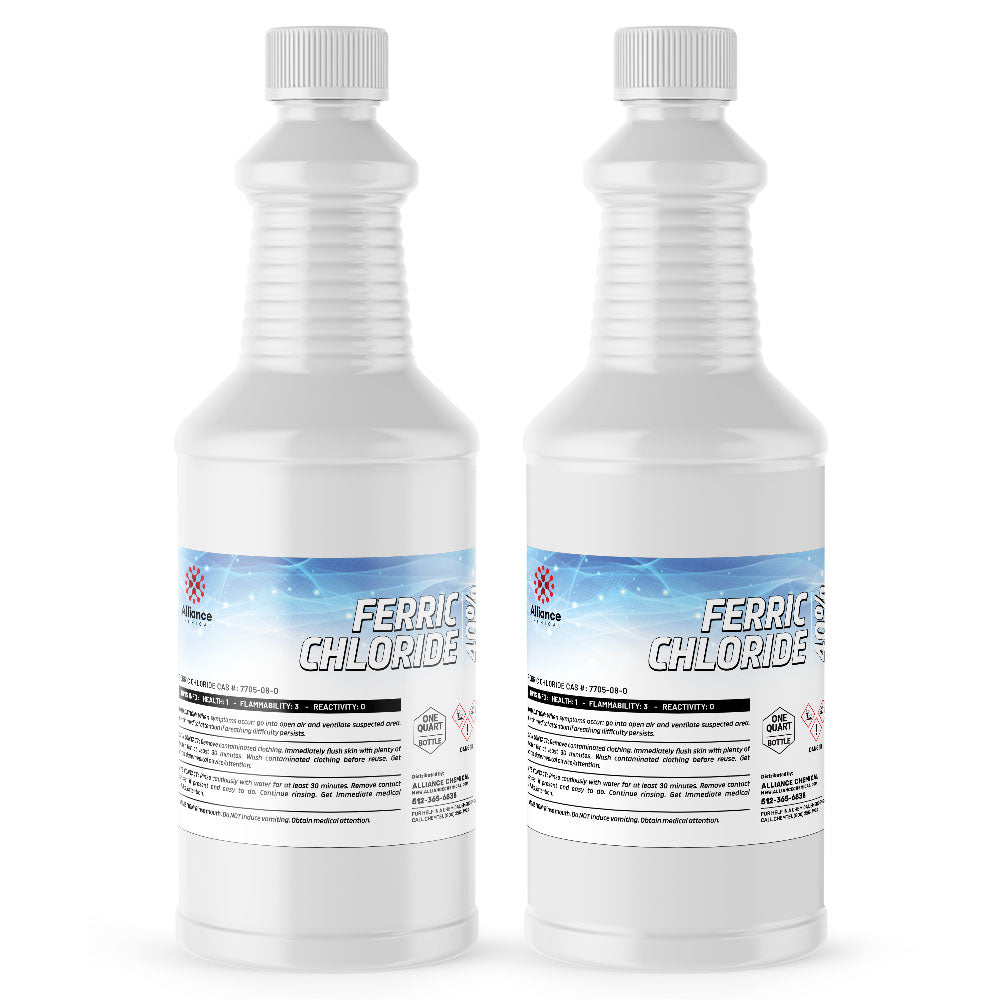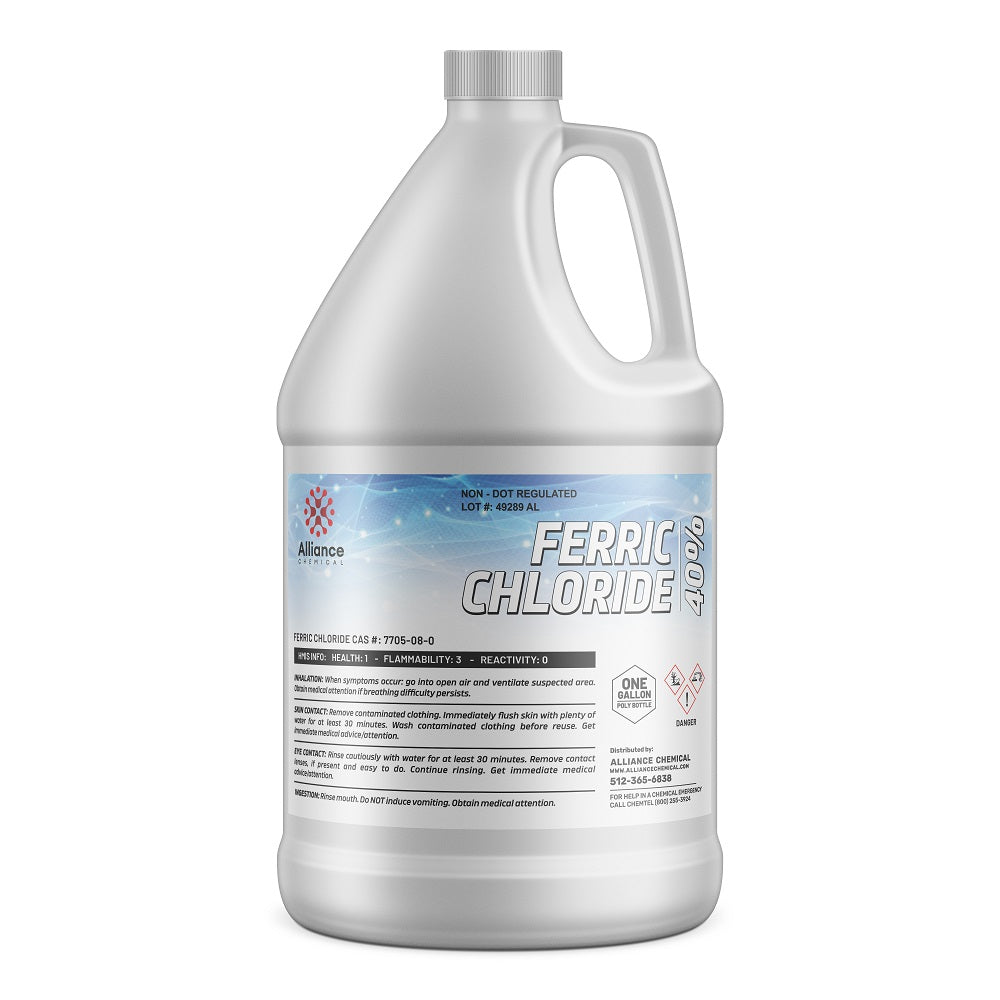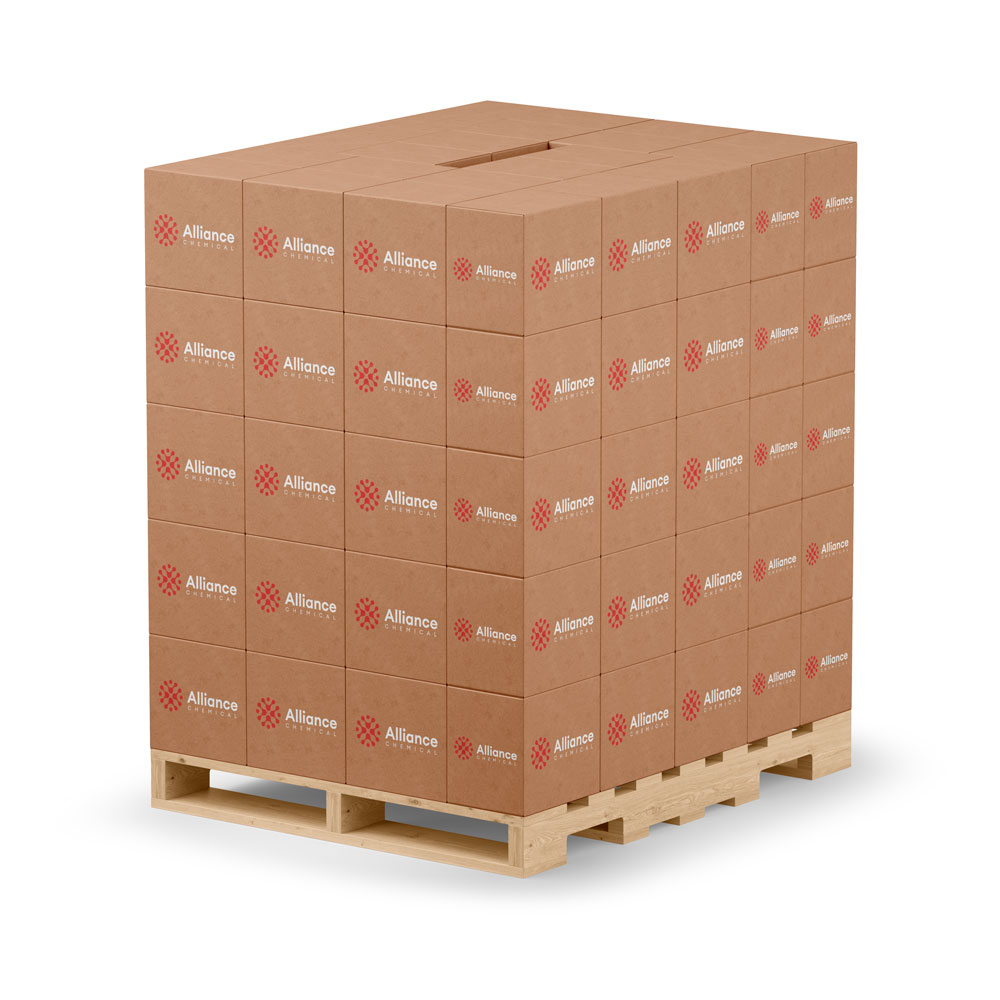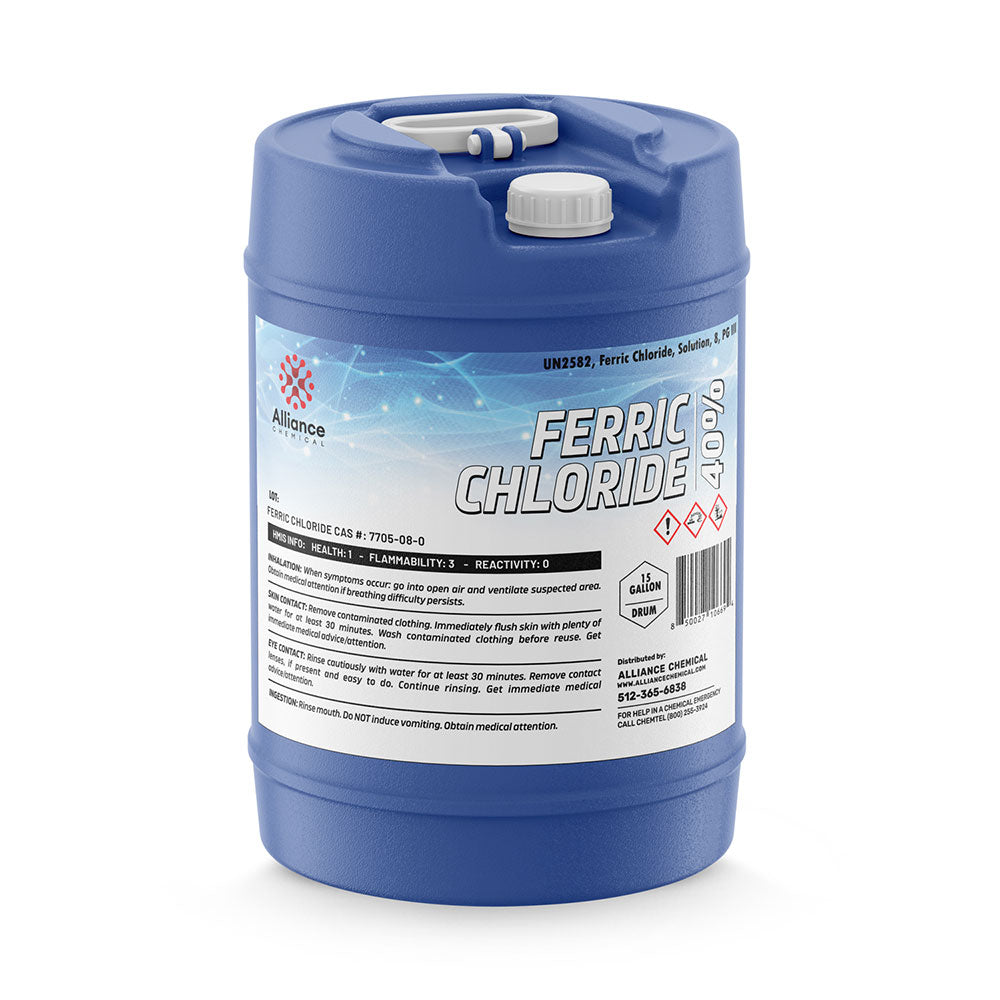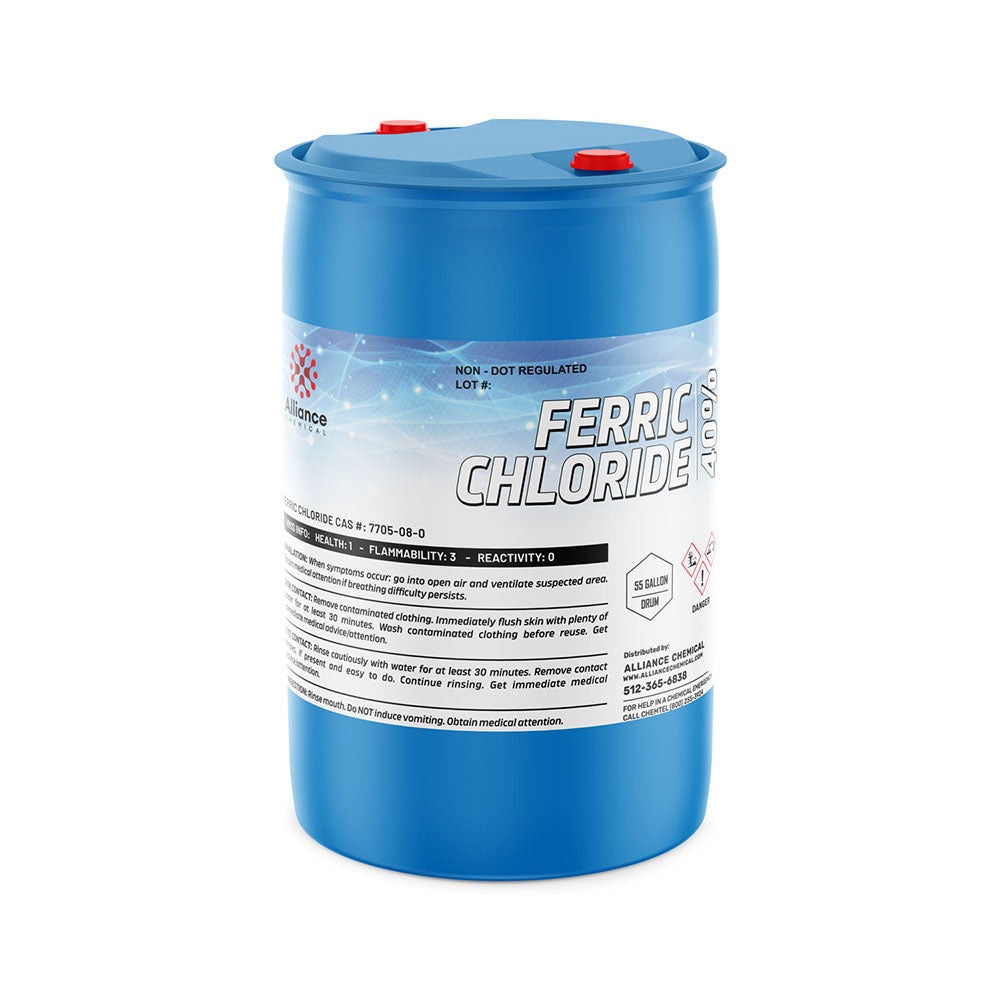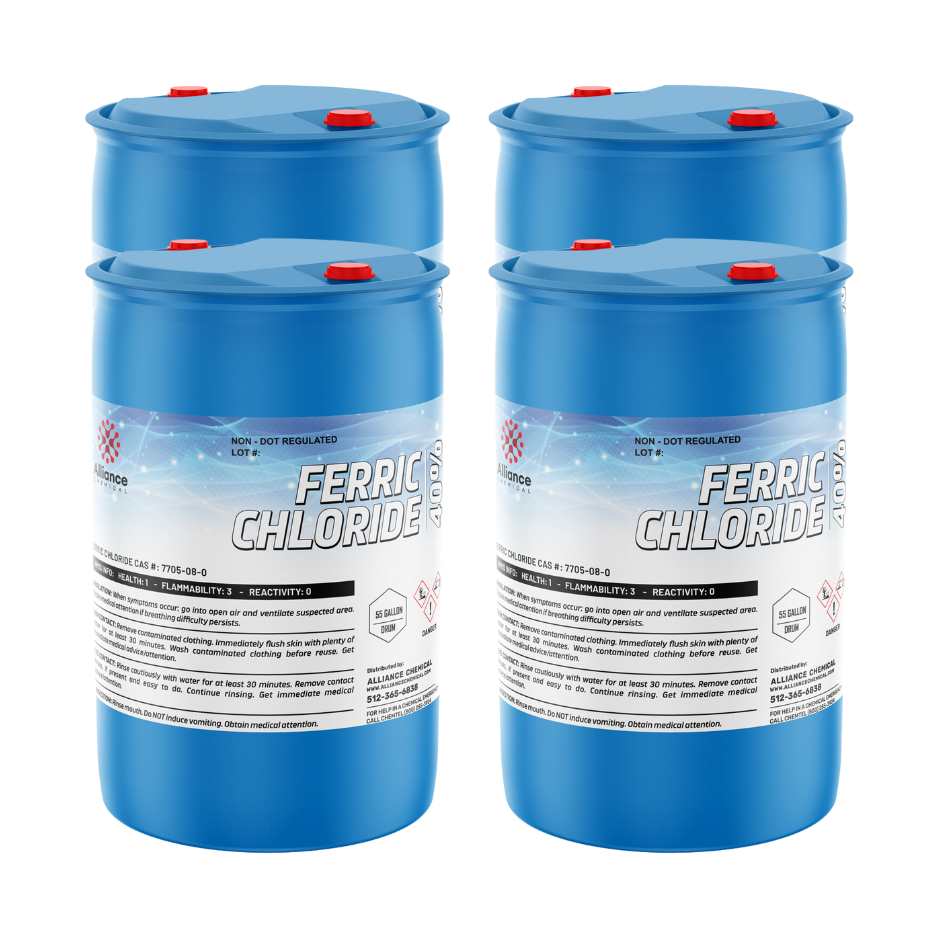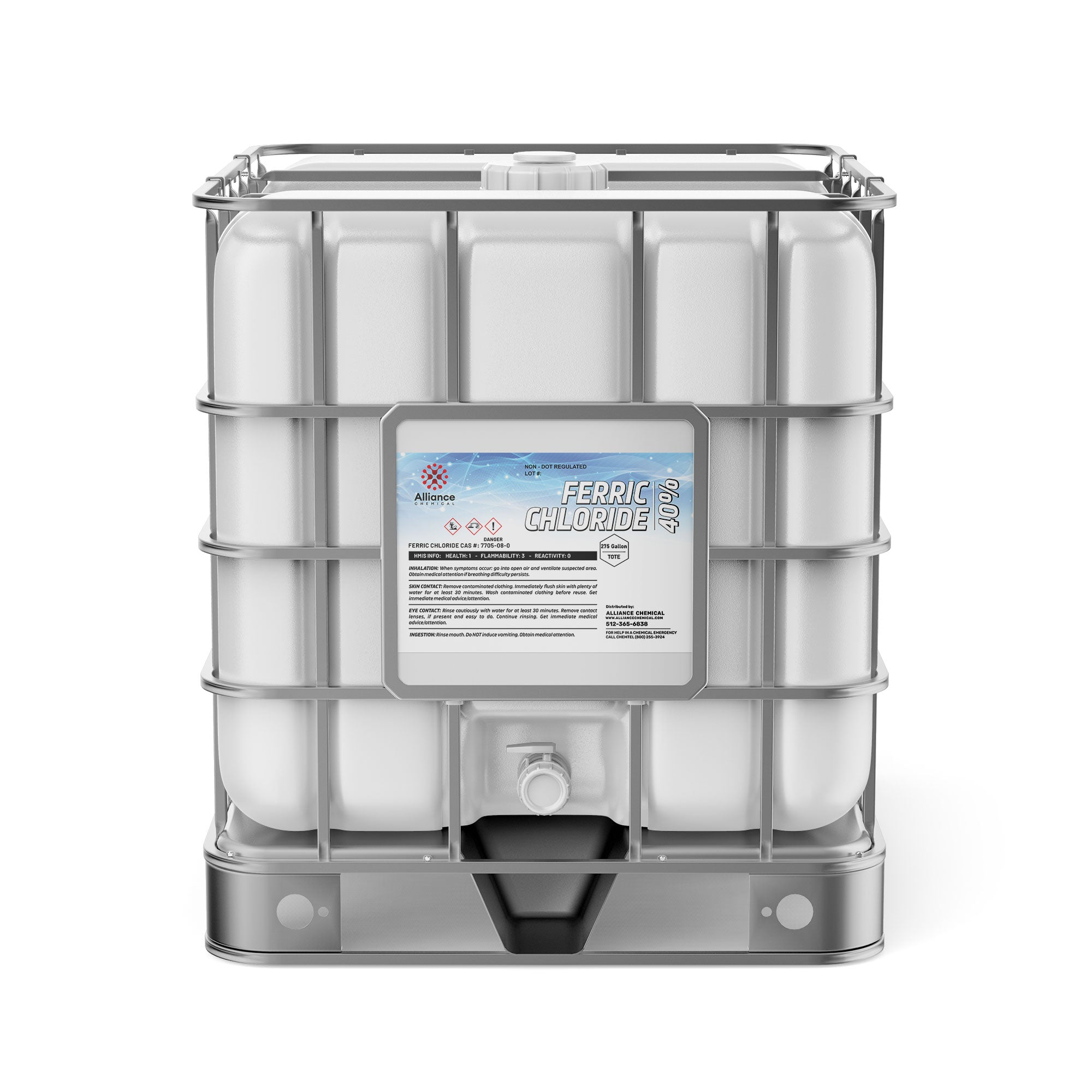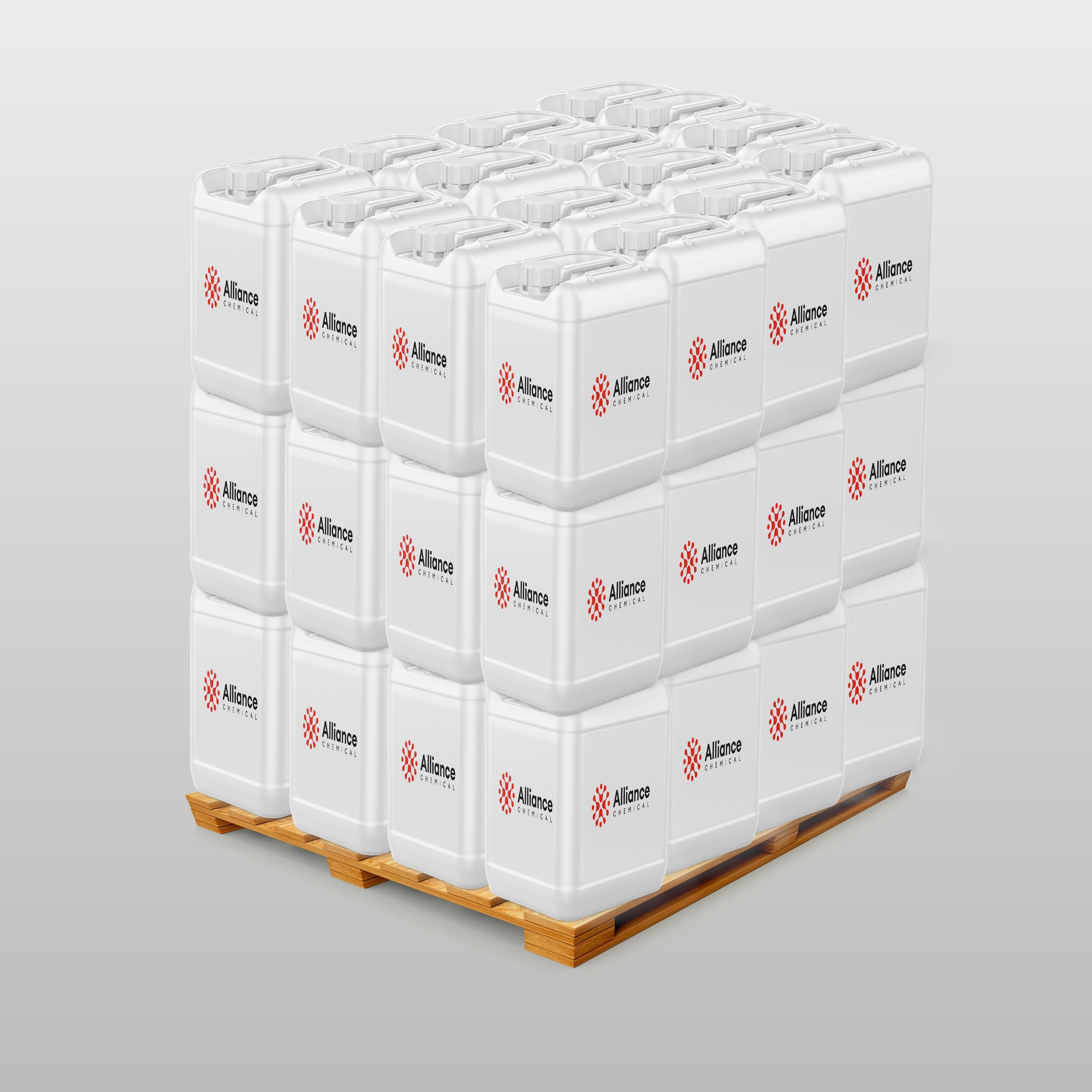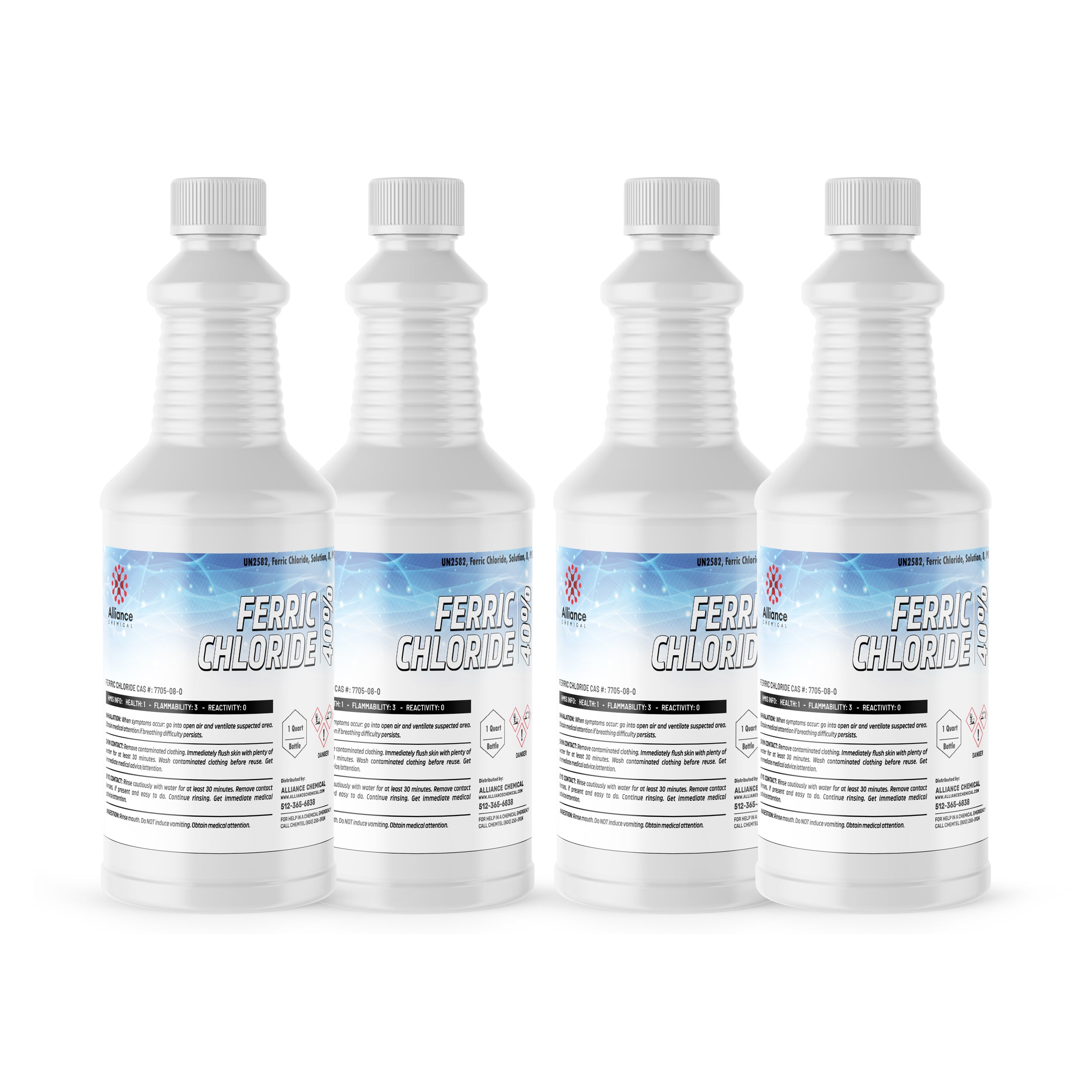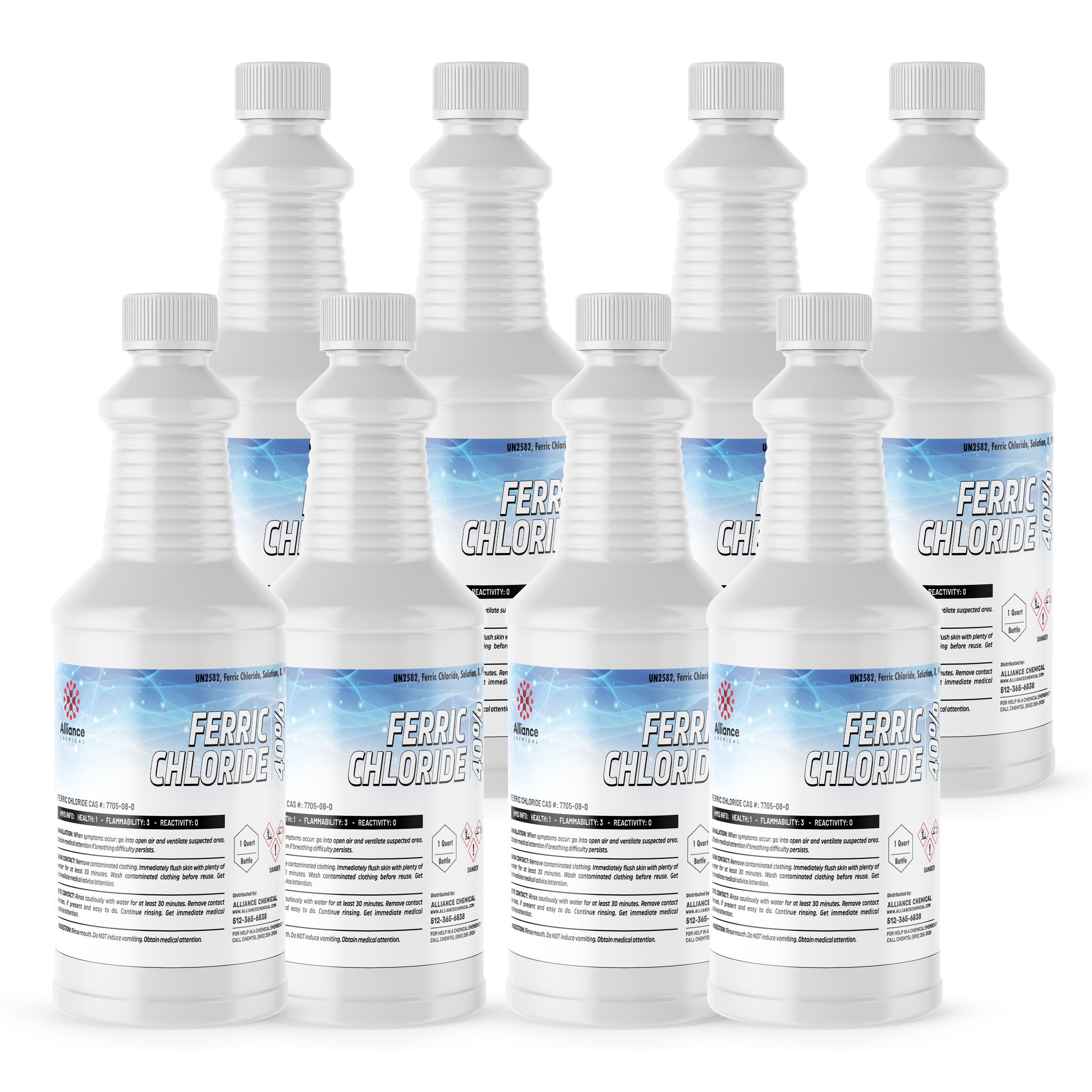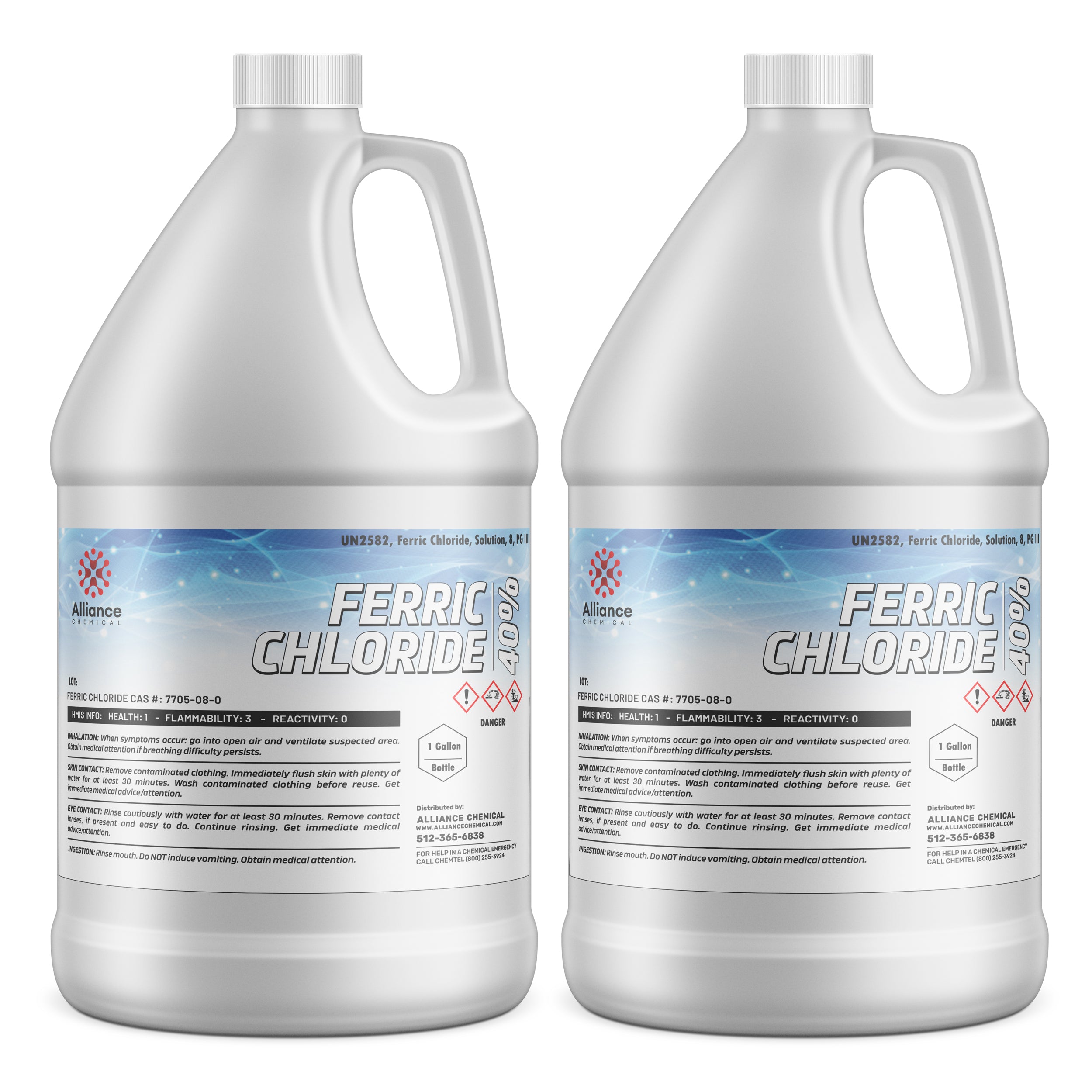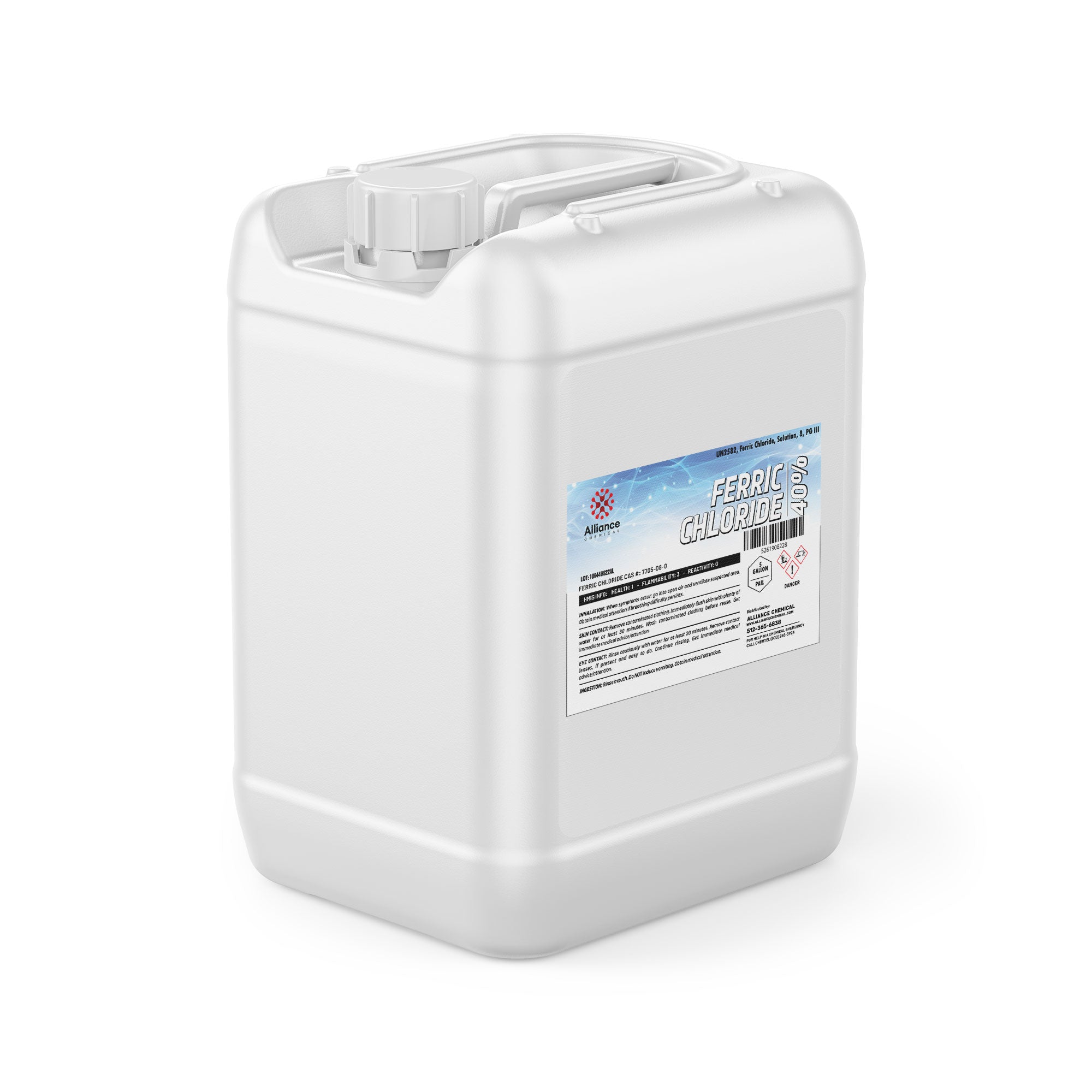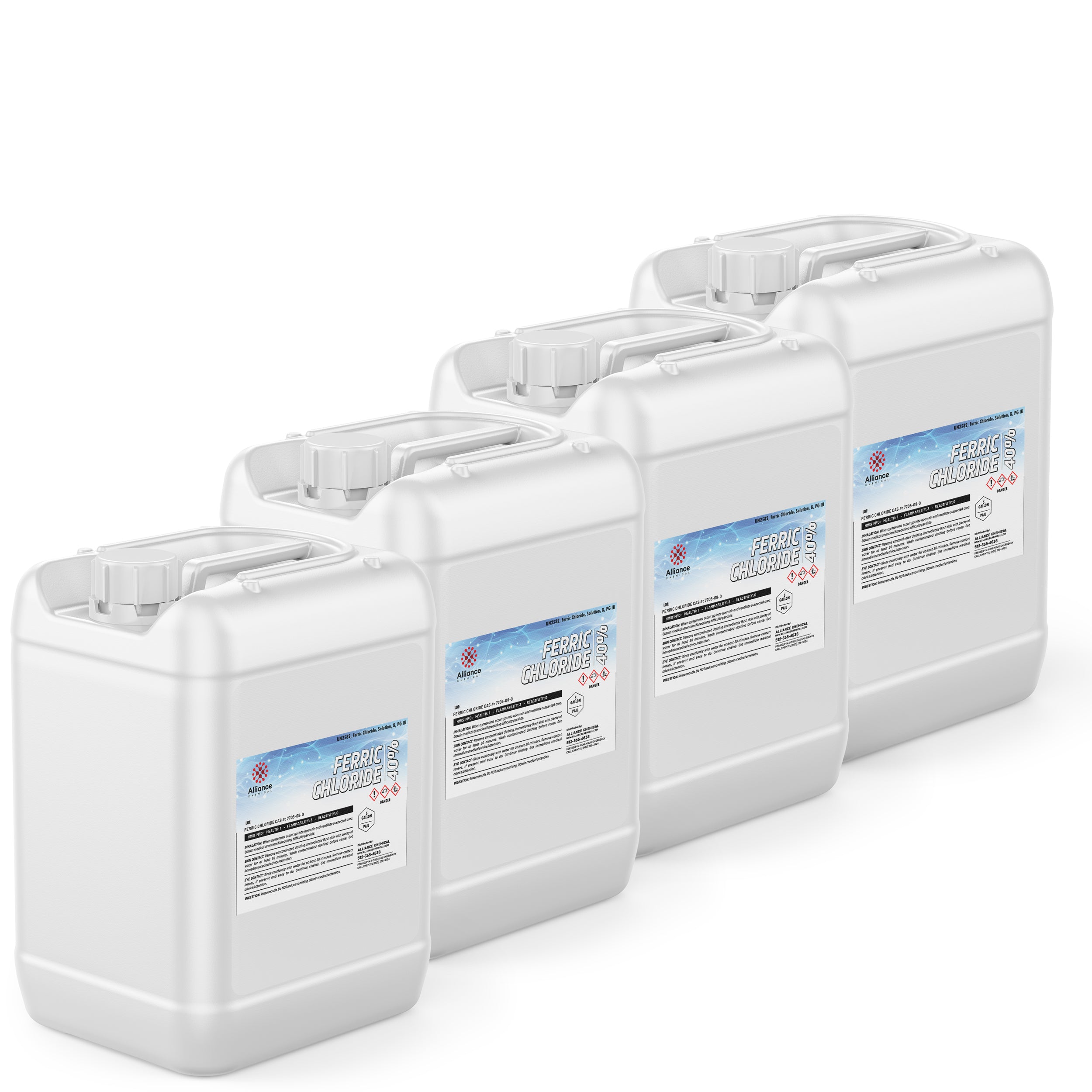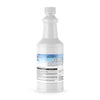Ferric Chloride 40%
Category : Inorganic Compounds, Water Treatment
$15.50
$190.00
91%
Off
Unit price
Quantity
Ask a question
Product Overview
Ferric Chloride 40% is an aqueous solution of iron(III) chloride, a highly soluble salt with strong oxidizing properties that enables rapid coagulation and flocculation in treating aqueous streams. The solution is formulated to deliver precise dosing for scalable industrial use, with a typical iron content around 40% w/w as confirmed by ICP-OES analysis. In addition to its primary coagulation function, the solution serves as a versatile intermediate in pigment production and as an etchant in electronics manufacturing, where controlled acidity and iron speciation influence process performance. This product is supplied under stringent quality controls to ensure consistency for process control and regulatory compliance in municipal and industrial water treatment, as well as in laboratory and manufacturing environments.
Its compatibility with standard storage and handling practices makes Ferric Chloride 40% a reliable choice for engineers and technicians requiring repeatable results across batch-to-batch production. The product is maintained under inert conditions to minimize oxidation and degradation, while the accompanying specification suite provides defensible targets for residual contaminants, chloride content, and trace metals. By aligning with recognized standards and rigorous analytical methods, this ferric chloride solution supports clean-in-place (CIP) and shock-chlorination workflows when used per applicable guidelines.
Key Properties
- Property Name: Assay Weight Percent (min–max)
- Chemical Formula: FeCl₃
- Molecular Weight: 162.20 g/mol
- Boiling Point: N/A
- Specific Gravity: 1.18–1.20 (typical 1.19) at 20°C
- Residue After Ignition: ≤ 0.5% (typical 0.2%)
- Chloride (Cl⁻) present: ≤ 700,000 ppm (typical 600,000 ppm)
- Nitrate (NO₃⁻): ≤ 5,000 ppm (typical 1,000 ppm)
- Ammonium (NH₄⁺): ≤ 100 ppm (typical 20 ppm)
- Sulfate (SO₄²⁻): ≤ 5,000 ppm (typical 1,000 ppm)
- Phosphate (PO₄³⁻): ≤ 1,000 ppm (typical 200 ppm)
- Arsenic (as As): ≤ 0.1 ppm (typical 0.02 ppm)
- Heavy Metals (as Pb): ≤ 2 ppm (typical 0.5 ppm)
- Iron (Fe): ≤ 1,000 ppm (typical 300 ppm)
- Copper (Cu): ≤ 10 ppm (typical 2 ppm)
- Manganese (Mn): ≤ 5 ppm (typical 1 ppm)
- Nickel (Ni): ≤ 5 ppm (typical 1 ppm)
- Lead (Pb): ≤ 5 ppm (typical 1 ppm)
- Zinc (Zn): ≤ 5 ppm (typical 1 ppm)
- Aluminum (Al): ≤ 50 ppm (typical 10 ppm)
- Chromium (Cr): ≤ 50 ppm (typical 10 ppm)
- Cobalt (Co): ≤ 5 ppm (typical 1 ppm)
- Calcium (Ca): ≤ 1,000 ppm (typical 300 ppm)
- Magnesium (Mg): ≤ 1,000 ppm (typical 300 ppm)
- Potassium (K): ≤ 3,000 ppm (typical 800 ppm)
- Sodium (Na): ≤ 3,000 ppm (typical 700 ppm)
- Substances Reducing Permanganate: Passes test (Potassium permanganate time test)
- Sulfurous Acid (H₂SO₃): ≤ 1,000 ppm (typical 200 ppm)
- Available Chlorine (as Cl₂): 0.5–2% (typical 1.5%)
- Free Alkali (NaOH): 0.1–0.5% (typical 0.2%)
- Other Impurities: Bromate, Chlorate, and other tracers within specified limits
- Water Content: 0–60% (typical 55%)
Common Applications
- Water Treatment: Used as a coagulant/flocculant in drinking water and wastewater treatment to destabilize colloids and promote sludge formation in clarifiers, with dosing controlled to meet turbidity and residual iron specifications.
- Etching Agent: Employed in the electronics industry for chemical etching of printed circuit boards, where controlled corrosion and oxide formation are required for pattern development.
- Pigment Production: Serves as a chemical precursor in synthesizing pigments and dye intermediates, enabling oxidation-state control in pigment formation processes.
- Laboratory Reagent: Commonly used in analytical chemistry and synthetic workflows as an oxidizing medium or catalyst-supporting reagent in various titrations and reactions.
- Catalyst: Acts as a catalyst in selected organic synthesis pathways, including oxidation and chlorination steps, under carefully controlled conditions.
Safety Precautions
Handle Ferric Chloride 40% with appropriate corrosion-resistant equipment, and store in cool, dry areas away from direct sunlight in HDPE or glass containers. Maintain adequate ventilation to minimize inhalation exposure, and use PPE including chemical-resistant gloves, splash goggles, and lab coat or apron. Ensure containment measures are in place to prevent spills from entering drains or water systems, and follow local regulations for hazardous material handling.
Ongoing safety considerations include monitoring pH and iron content to maintain coagulation effectiveness while complying with environmental discharge limits. In the event of exposure, follow established first-aid procedures: rinse eyes or skin immediately with plenty of water, remove contaminated clothing, and seek medical attention for any persistent irritation or signs of injury. For ingestion or inhalation incidents, seek immediate medical guidance and avoid inducing vomiting unless directed by a medical professional.
Benefits
✔ Reliable Coagulant Performance – Delivers predictable iron-based coagulation across a range of water qualities, enabling efficient solids removal and improved turbidity control.
✔ High Purity with Trace Metal Control – Stringent specification targets reduce the risk of co-contaminants affecting downstream processes or regulatory compliance.
| Property | Value |
|---|---|
| Molecular Weight | 162.21 g/mol |
| Formula | FeCl3 |
| Assay | 40% |
| Grade | Technical |
| Form | Liquid |
| Solubility | Highly water soluble, compatible with alcohols |
| Appearance | Dark brown liquid, metallic luster, fuming |
| Melting Point | 37 °C |
| Boiling Point | 280 °C |
| Specific Gravity | 1.43 |
| Industry | Industrial, Environmental, Wastewater |
Compare Products
| Price |
|---|
| SKU |
| Rating |
| Discount |
| Vendor |
| Tags |
| Weight |
| Stock |
| Short Description |

